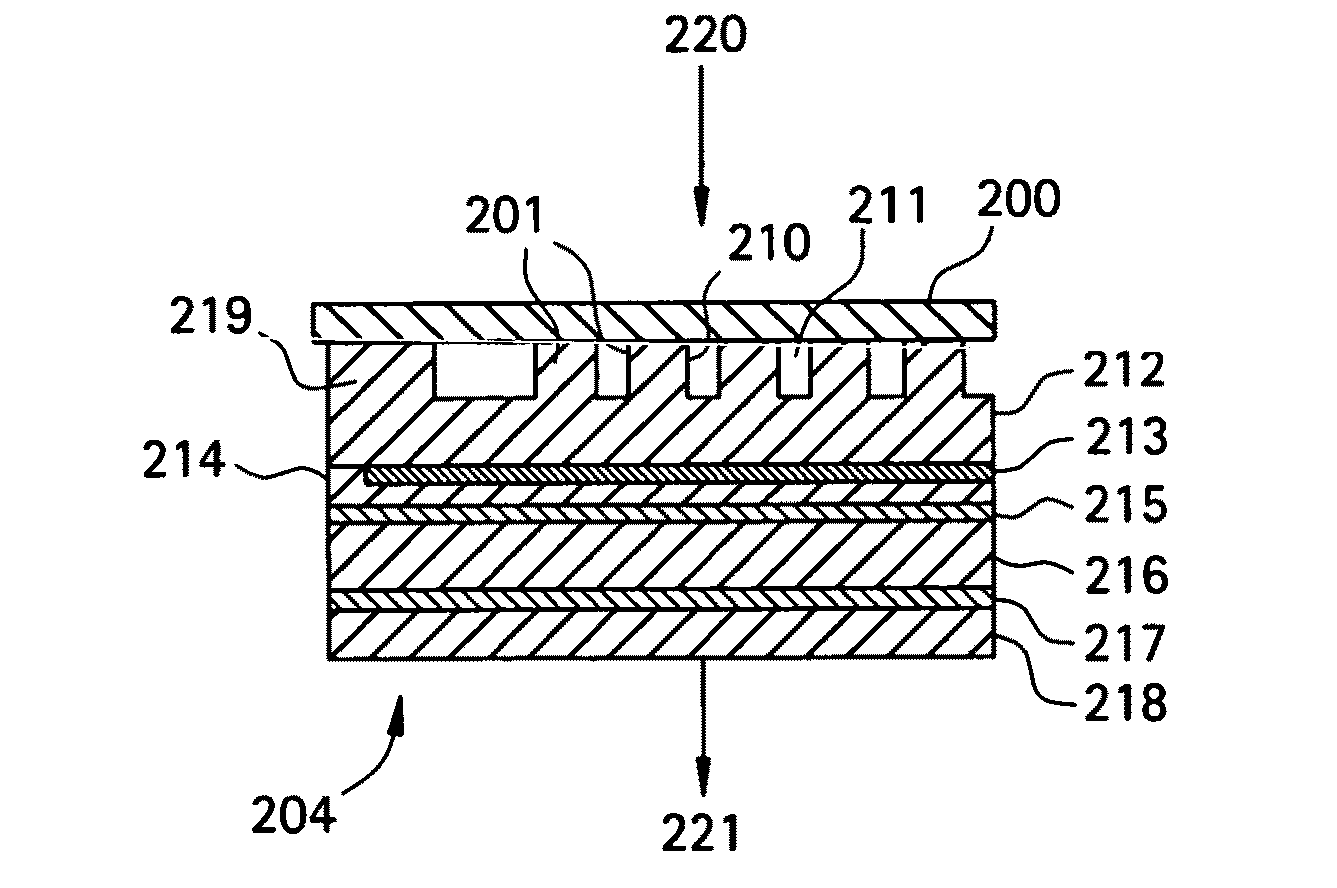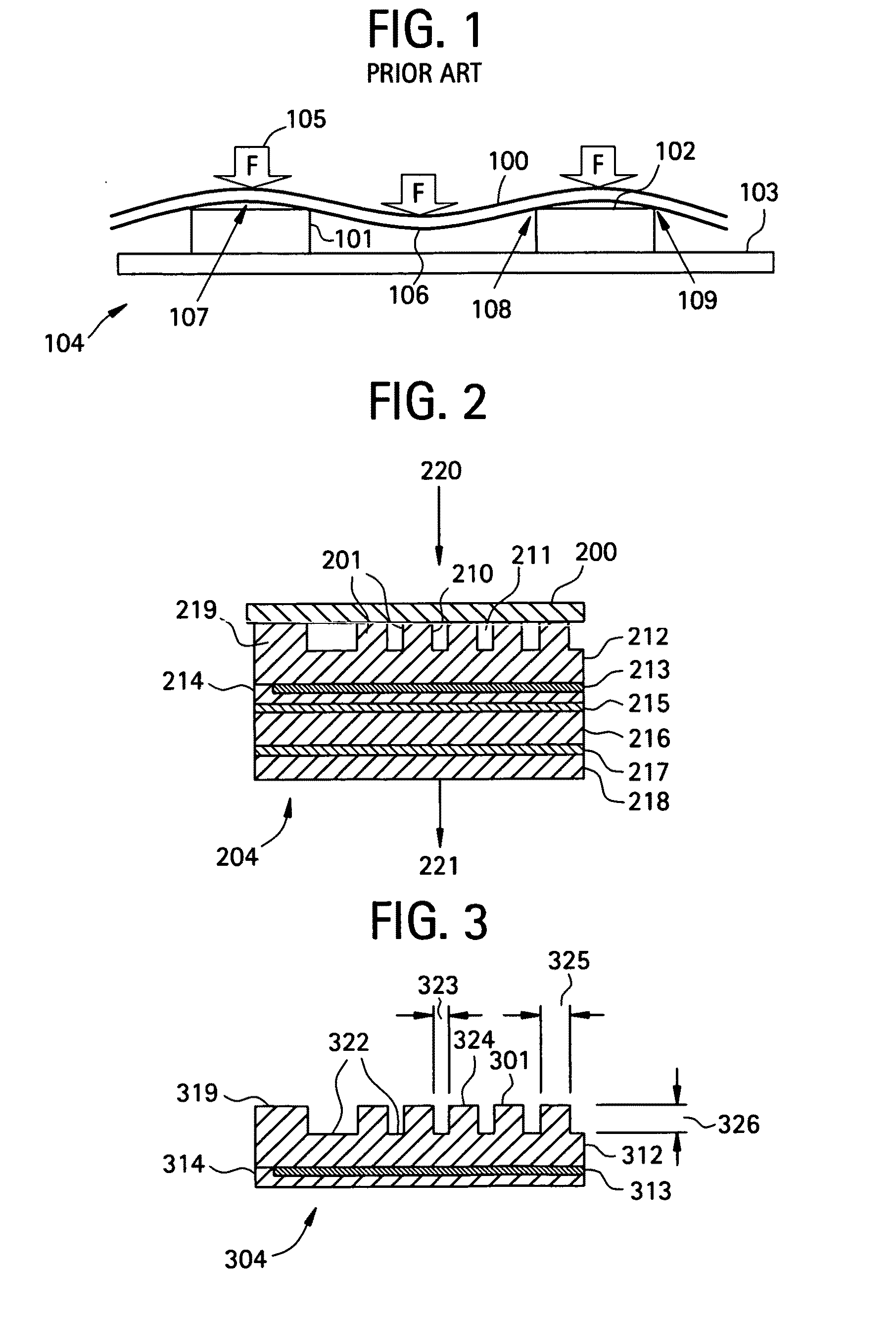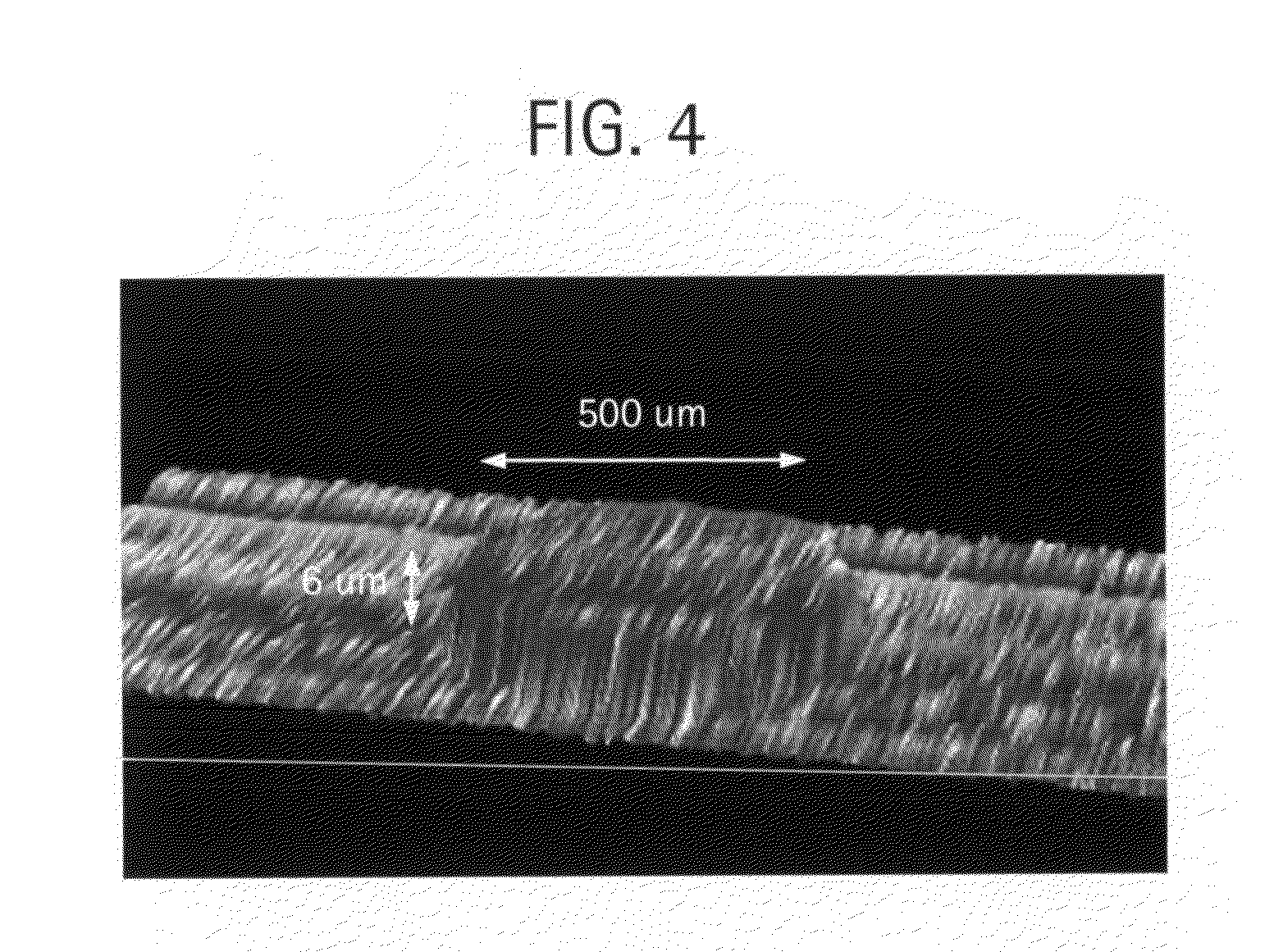Electrostatic chuck
a technology of electrostatic chuck and substrate, which is applied in the direction of electrostatic holding device, basic electric elements, electric apparatus, etc., can solve the problems of substrate distorted, difficult control of contact amount between substrate and protruding protruding, and more restrictive allowable particulate contamination process specifications
- Summary
- Abstract
- Description
- Claims
- Application Information
AI Technical Summary
Benefits of technology
Problems solved by technology
Method used
Image
Examples
example 1
[0071]This example illustrates calculated forces for a trigonal pattern of 6 micron high bumps or protrusions, formed on the surface of an electrostatic chuck in accordance with an embodiment of the invention. As shown in the embodiment of FIG. 8, on example includes protrusions 801 that feature a 4 millimeter center to center spacing 827 and a diameter 828 of 0.75 millimeters. In the embodiment of FIG. 8, the protrusions 801 may be made from 10 micron thick SiC vapor deposited from Si and C sources by PECVD on an alumina dielectric layer. The SiC has a low stress. The SiC layer may be etched by reactive ion etching through a 30 micron photomask to form the protrusions. Gas seal rings may be formed around the perimeter of the electrostatic chuck, and around the lift and ground pin holes of the electrostatic chuck. Gas ports for adding and removing a gas, such as helium or hydrogen or another fluid for gas heat transfer may be formed in the chuck.
[0072]FIG. 6 is a graph of calculated...
example 2
[0074]This example describes a trigonal pattern of protrusions that was formed on the surface of an electrostatic chuck, with 8 millimeter center to center spacing between protrusions in accordance with an embodiment of the invention. The diameter of the protrusions was 0.5 millimeters. The protrusions on the platen of the electrostatic chuck were divided into three sections and made from different materials (SiC, a non-stoichiometric SiC deficient in carbon, and an Si section). The individual sections were made by PECVD of suitable precursor gases deposited on an alumina dielectric layer. The sections were etched by reactive ion etching through a 30 micron photomask to form the protrusions. Gas seal rings may be formed around the perimeter of the electrostatic chuck and around the lift and ground pin holes of the electrostatic chuck. Gas ports for adding and removing a gas, such as helium or hydrogen or another fluid for gas heat transfer, may be formed in the chuck.
[0075]FIGS. 9A ...
PUM
 Login to View More
Login to View More Abstract
Description
Claims
Application Information
 Login to View More
Login to View More - R&D
- Intellectual Property
- Life Sciences
- Materials
- Tech Scout
- Unparalleled Data Quality
- Higher Quality Content
- 60% Fewer Hallucinations
Browse by: Latest US Patents, China's latest patents, Technical Efficacy Thesaurus, Application Domain, Technology Topic, Popular Technical Reports.
© 2025 PatSnap. All rights reserved.Legal|Privacy policy|Modern Slavery Act Transparency Statement|Sitemap|About US| Contact US: help@patsnap.com



